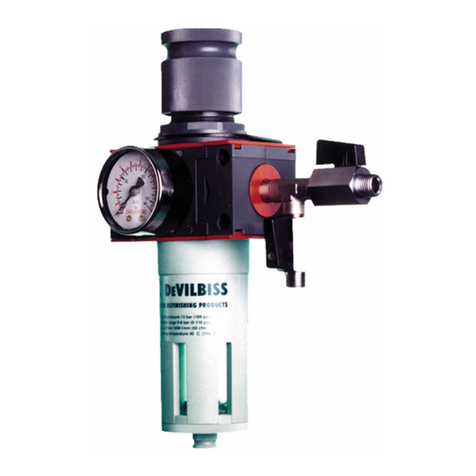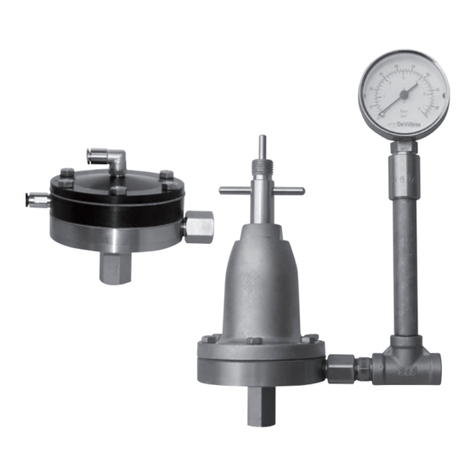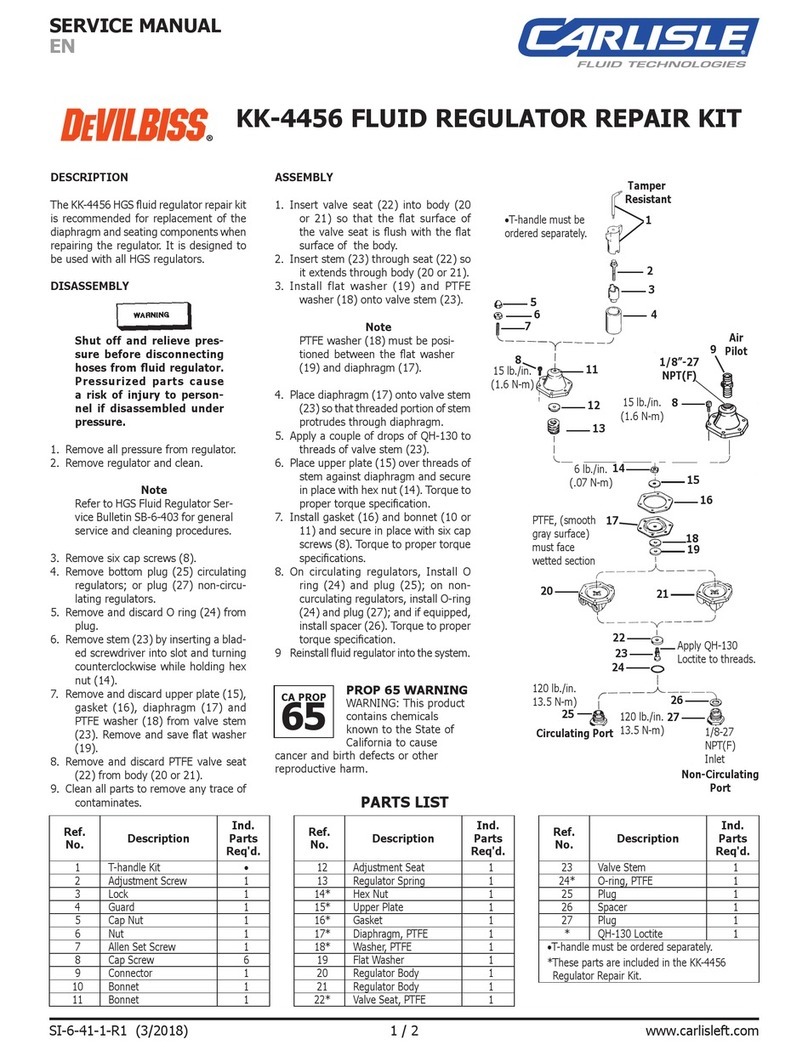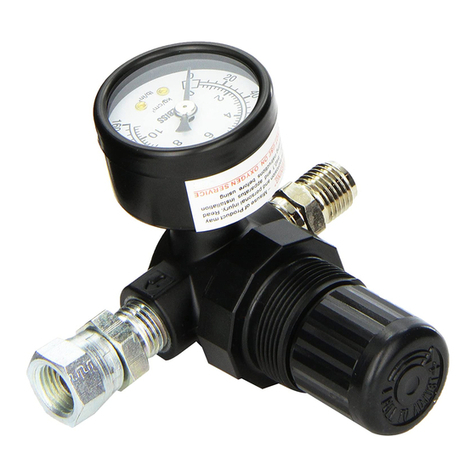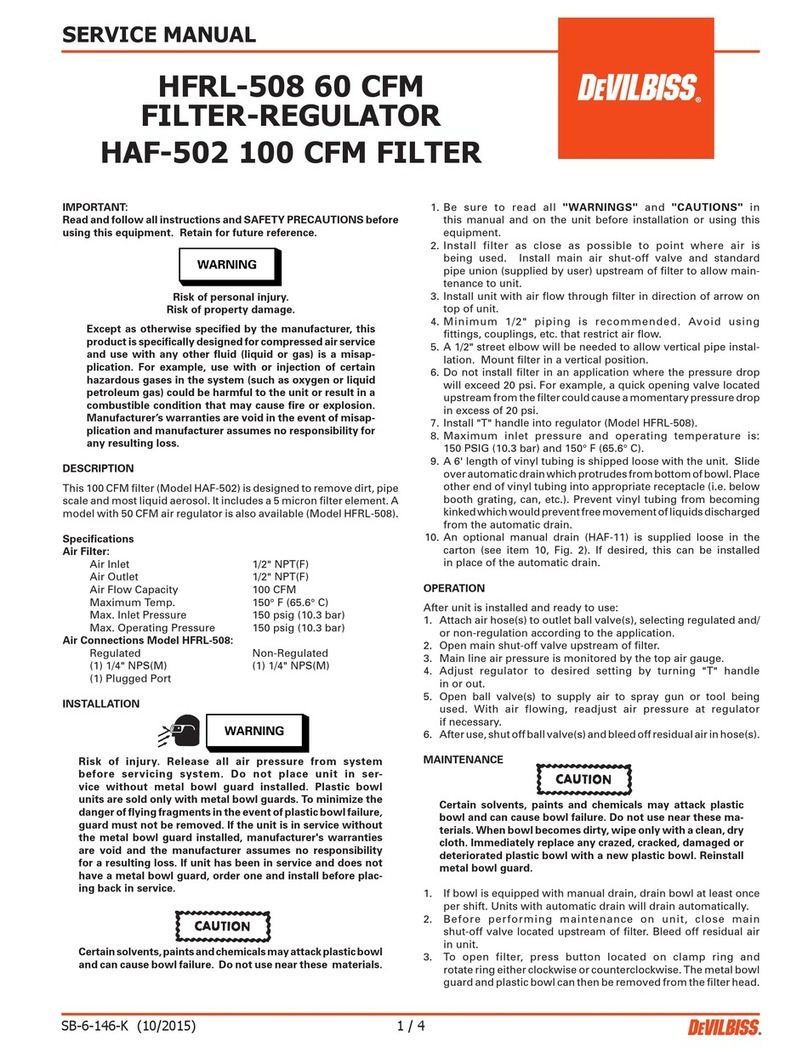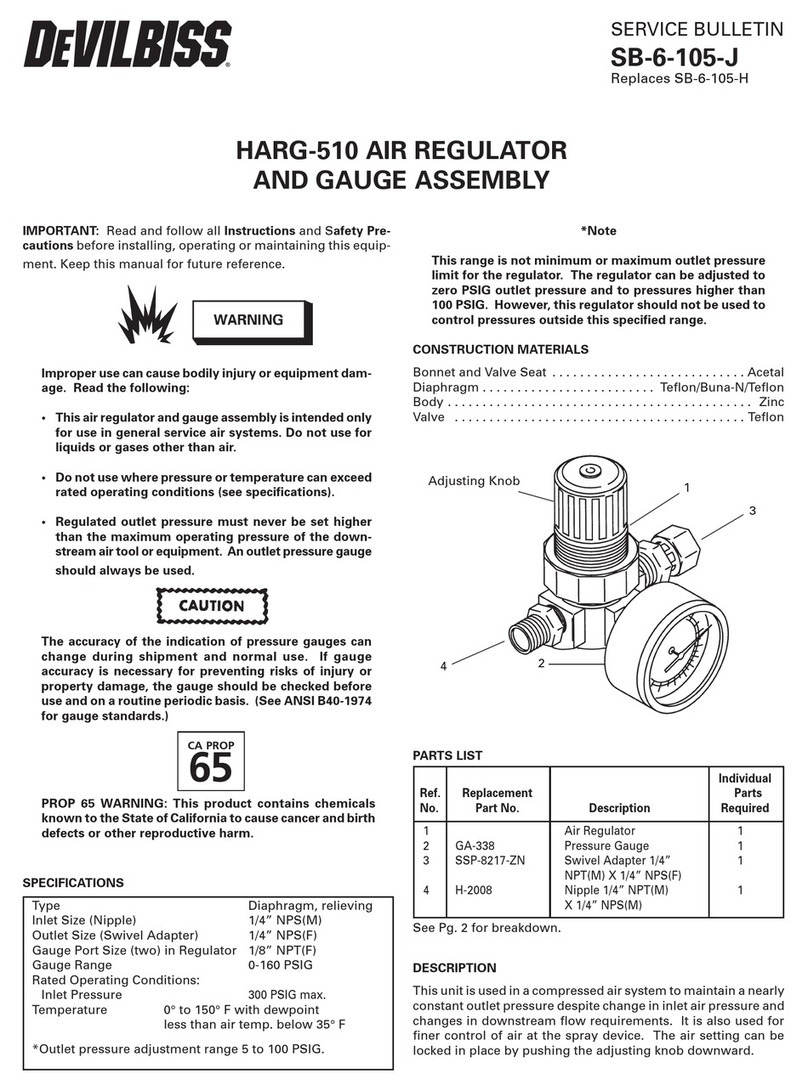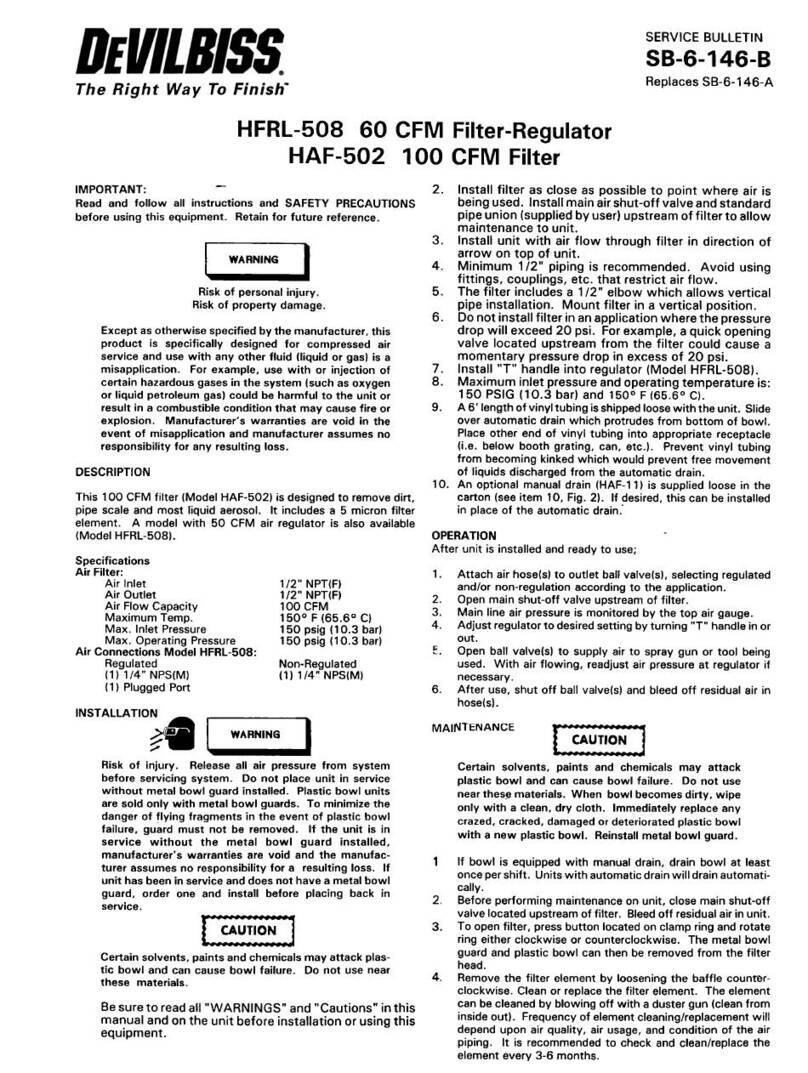
Service Bulletin
SB-6-371-1
Replaces SB-6-371-H
The Right Way To Finish-
Important: Before using this equip-
ment, read all safety precautions and in-
structions. Keep for future use.
See" ACCESSORIES" section for connections
for riser, gauge, tee, inlet swivel and ball
valves.
4. Periodically clean exterior of regulator
with solvent soaked cloth.
PARTS REPLACEMENT
The HGB regulator may be serviced without
removing it from the line.
OPERATION
Fluid pressure adjustment is done with a re-
movable key (1). Insert large end of key into
top of regulator. Turn clockwise to increase
fluid pressure, counterclockwise to decrease
fluid pressure.
~
Note
Relieve line pressure before servic-
ing regulator.
Model HGB-502
Regulator Assembly
Only
Fluid pressure adjustment can also be accom-
plished remotely with air control: Remove six socket head cap screws (2) with
a 5/32" Allen wrench. The small end of the
adjusting key (1) may be used for this pur-
pose.
Model HGB-508
Includes HGB-502 regulator
plus gauge, riser tube and
fittings.
1. Turn adjusting key (1) fully counterclock-
wise turning the regulator off.
2. Remove adjusting key (1).
3. Install a 1/4" NPT(M) fitting H-2008 for air
hose connection.
4. Use a regulated air supply to adjust fluid
pressure regulator.
PREVENTIVE MAINTENANCE
Periodic cleaning of regulator with a solvent
compatible with the material being used is
recommended.
~
rTo clean material from the regulated mate-
rial line and the regulator, these steps should
be followed:
.SPECIFICATIONS:
Height: 5" (excluding adjusting key)
Width: 2-7/8"
1. Relieve supply line pressure.
2. Using the small end of the adjusting key
(1), engage the regulator and screw it
down tight. This holds the valve off its
seat. Also, the key may be used in this
position to prevent waste from entering
the regulator when spray booth is cleaned.
3. Blow material back through the regulated
line by introducing air pressure into the
line down stream from the regulator. With
spray gun attached, this can be done by
loosening air cap ring on gun, holding
cloth over air cap and pulling trigger. This
forces air in a reverse path through spray
gun and air forces material back through
regulated material line.
To Replace Diaphragm:
1. The diaphragm socket (8) has an arrow
stamped on top. Curl the edge of
the diaphragm up where the arrows point.
2. Slip the diaphragm assembly out from
under the valve stem nut (C) so the nut is
released from the socket (8).
3. Remove nut (A) and pull off diaphragms
(7). Install 2 new diaphragms over
threaded end of the socket (8). Convex
sides of each diaphragm must be toward
threaded end.
4. Apply retaining compound to male
threads as shown and install nut (A).
5. Install diaphragm into body by again curl-
ing the edges of the diaphragms.
6. Slip socket (8) under valve stem nut (C).
7. Reassemble regulator body. Tighten all six
cap screws evenly to 65 to 75 in./lbs.
torque.
Inlet Pressure IRegulated IMax. FlUid/Max. I Min. Outlet Press. Flow Connectio~s
175ps~l~psi I 10-75psi I 8gal/min.I ~~PT(FI
Maximum temperature 180°F.
INSTALLATION
The HGB regulator is provided with two side
outlet ports and one bottom inlet port, all 3/8"
NPT(F). The regulator may be installed either
vertically or horizontally for flexibility of
installation. In either case, riser and gauge
should be mounted vertically. The HGB-508
includes gauge, riser tube and fittings
factory installed.
To Service Valve Assembly:
1. Valve assembly can be removed from the
body with a 3/4" socket wrench.
2. Remove nut (C) and discard stem and seat
(9).
3. Reassemble. Apply retaining compound
to male threads on stem and tighten nut
as shown.
4. When reinstalling, tighten valve assembly
to 20 to 25 in./lbs. torque.
Since the gauge operates on air trapped in
the riser, a rise is always necessary. Any leaks
in riser or gauge connections will permit
this trapped airto escape thus allowing paint
to get into the gauge causing damage.
~]
It is recommended that at initial instal-
lation the material supply line should
not be flushed through the regulator
because pipe compound, chips, scale,
etc., may lodge in the regulator valve
assembly.
